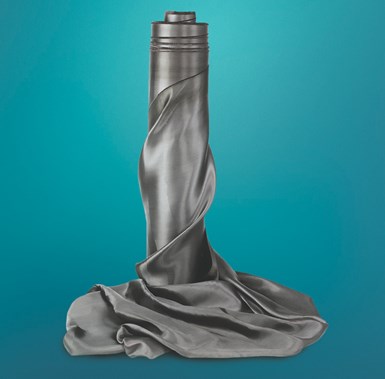SGL Carbon introduces temperature-resilient carbonized rayon fabric
Rayon-based carbon fiber fabrics play a crucial role in protecting structural components from high heat in applications such as aerospace and space.
SGL Carbon (Valencia, Calif., U.S. and Wiesbaden, Germany) announces the development of temperature-resilient carbonized rayon fabric used to produce carbon fiber cloth composites. These composite materials protect structural components from heat by functioning as ablative materials due to their extreme temperature resilience. In addition, carbon fiber fabrics show optimal thermal stability, mechanical properties (including high strength, high quality and purity) and are lightweight and chemically inert.
At SGL Carbon’s center of competence in Valencia, California, the company produces its carbon fiber fabrics using a state-of-the-art PLC-controlled
carbonization process that transforms 100% rayon-based continuous filament rayon cloth into high-quality carbon fiber fabric at temperatures above
1,200°C (approximately 2,220°F).
With more than four decades of experience in manufacturing carbon fiber fabrics for demanding and extreme applications, SGL Carbon is committed to delivering unparalleled quality and reliability.
“We can build on a long history and extensive experience in manufacturing high-quality carbon fabric for the most extreme and demanding applications,” says Brian Green, managing director of SGL Technic LLC. “We began our involvement in rayon-based carbon fabric production in 1976. SGL Carbon was an important supplier to the aerospace industry, producing, among others, material for the NASA Space Shuttle program.”
Related Content
-
Manufacturing the MFFD thermoplastic composite fuselage
Demonstrator’s upper, lower shells and assembly prove materials and new processes for lighter, cheaper and more sustainable high-rate future aircraft.
-
Recycling end-of-life composite parts: New methods, markets
From infrastructure solutions to consumer products, Polish recycler Anmet and Netherlands-based researchers are developing new methods for repurposing wind turbine blades and other composite parts.
-
The potential for thermoplastic composite nacelles
Collins Aerospace draws on global team, decades of experience to demonstrate large, curved AFP and welded structures for the next generation of aircraft.














